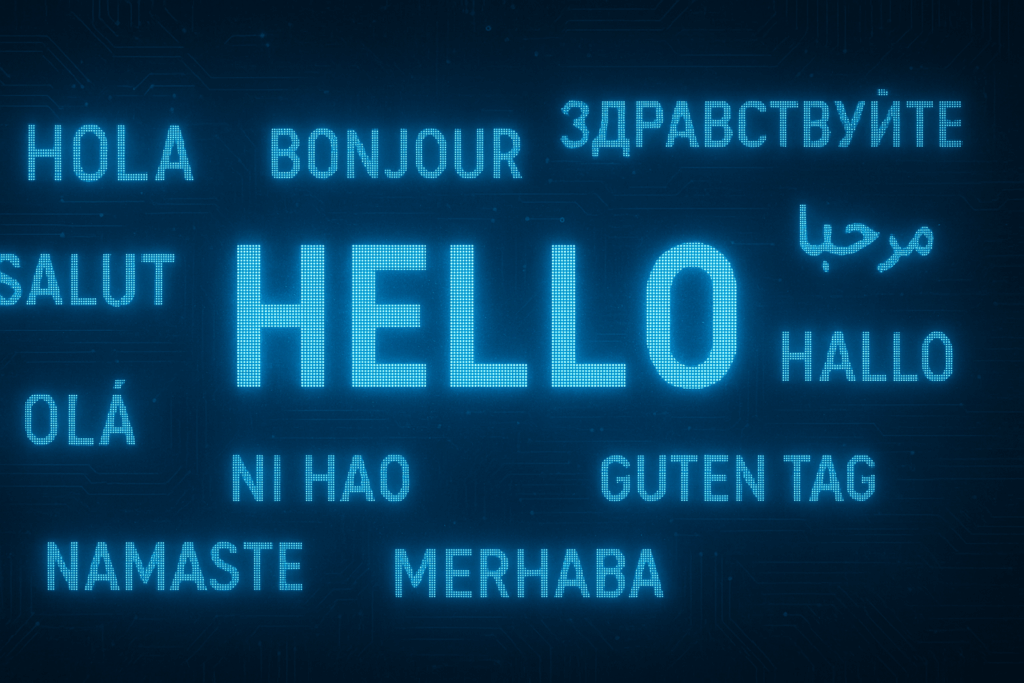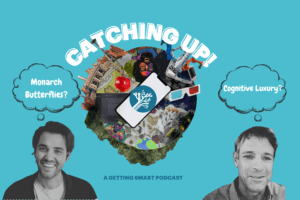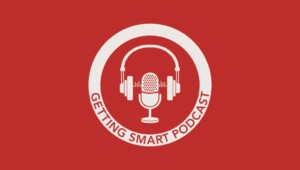Speaking the Same Language: Why World Language Teaching is Essential to Education
Key Points
-
Multilingual education provides cognitive, academic, and societal benefits, preparing students for global citizenship and economic opportunities.
-
Effective language programs require visionary leadership and early, sustained access to high-quality instruction, not just increased funding.

By: Jean-Claude Brizard and Mengting Hou
Our experiences as immigrants have allowed us to appreciate the varied cultures that make up these great United States, and delight in the benefits of living in international hubs such as New York, Chicago, and Los Angeles. The communities that make up our cities, suburbs, and towns reflect the richness in art, food, and people found around the globe.
Learners deserve to experience our increasingly interconnected world through language. And language taught well should involve a deep understanding of culture. As global borders become more porous and economies more intertwined, our education system’s current approach to language learning deserves thoughtful reconsideration.
We’ve observed many school districts treating world languages as supplementary rather than core curriculum. When budgets tighten, language programs are often among the first to face cuts. As a result, our graduates enter a global workforce at a disadvantage, often unable to communicate effectively with international partners. Meanwhile, students in Europe and Asia commonly graduate speaking multiple languages. But this isn’t solely about economic opportunities. It’s about preparing our children adequately for the world they’ll inherit.
The research supporting multilingualism is compelling, yet it hasn’t significantly influenced our educational policy. World languages are fundamental to developing adaptable, creative minds capable of navigating our complex global reality. They help improve cognitive skills, drive academic excellence and boost empathy. When a child learns a second language, their neural pathways multiply, cognitive flexibility expands, and problem-solving abilities are enhanced. Children who are multilingual move between languages with remarkable ease, switching mental frameworks effortlessly.
The academic benefits extend beyond language arts. In mathematics, language learners demonstrate enhanced spatial reasoning and abstract thinking. In science, they show greater cognitive flexibility when approaching complex problems. In social studies, they bring nuanced cultural understanding that enriches classroom discussions.
We’ve witnessed struggling students find new confidence when given the opportunity to learn in multiple languages. A child who feels challenged by English reading might discover success when approaching literacy through Spanish or Mandarin. These alternative pathways to knowledge represent valuable tools for educational equity that deserve greater implementation.
Language Education as a Gateway to Global Understanding and Empathy
We often speak about “global citizenship” while not fully embracing the very tool that makes it possible. Understanding another culture deeply is significantly enhanced by speaking its language.
During our many years living in the U.S., we’ve observed a clear distinction between Americans who invest in learning another language and those who don’t. For example, those who embrace Chinese language develop a nuanced understanding of Chinese culture, form authentic connections with native speakers, and access professional opportunities closed to their monolingual peers. In our years of teaching, we have watched students transform from hesitant beginners to confident communicators who navigate cultural complexities with ease. Meanwhile, those who remain exclusively English-speaking often view other countries and their people through a limited lens shaped by media portrayals.
We’ve also seen firsthand how multilingual education can transform school communities. When students experience the vulnerability of learning a new language, they often grow more empathetic toward peers with different accents or backgrounds. English learners, once overlooked, become respected experts. At one high school, a Syrian refugee who had been socially isolated became a go-to resource when an Arabic program launched – his skills reframed as assets, not deficits.
This isn’t merely about personal enrichment – it’s about our collective capacity for empathy in a world with increasing polarization. Language learning encourages us to step outside our cultural assumptions.
Broader Economic and Societal Benefits
As education policy and practice move to a broader definition of success – economic mobility, well-being and personal agency – the economic and societal benefits of language education are significant. Multilingual employees typically earn 10-15% more, and business leaders cite multilingualism as a top skill gap in American graduates. This demand spans from global corporations to main street businesses serving diverse communities.
Beyond earnings, multilingualism strengthens social cohesion and improves public services – from better police-community relations to higher hospital satisfaction. Language learning also sharpens cognitive skills like creative problem-solving, which fuels innovation. That’s why tech companies often recruit multilingual talent and invest in language training.
Innovations and Successful Examples in World Language Education
Implementing effective language education might feel challenging in this fiscal environment, but the common factor of successful programs isn’t abundant resources – it’s vision and leadership.
Portland Public Schools in Oregon implemented a district-wide dual-language immersion program despite budget limitations by reprioritizing its resources. Already they’ve experienced improved academic outcomes across subjects, particularly for students from disadvantaged backgrounds. Other forward-thinking districts are experimenting with two-way immersion programs that bring English-dominant and partner-language-dominant students together – creating classrooms where everyone teaches and learns from one another.
Utah,a politically diverse state, now offers dual-language immersion in Mandarin, Spanish, French, Portuguese, and German beginning in first grade. They achieved this not through massive funding increases but by repositioning language education as a core priority rather than an add-on.
Yet stories like this remain the exception rather than the norm, with many districts introducing languages relatively late, with limited instructional time, and sometimes without specialized teacher training.
Risks and Opportunities of Emerging Technologies
Emerging technologies such as artificial intelligence are opening new frontiers in language education and translation, but with this power comes responsibility. According to a recent report from Microsoft, “Interpreters and Translators” are cited as the most technically replaceable job based on exposure and AI capabilities. This is based merely on task completion and surface-level language performance; however, this view does not align with what we know from the neuroscience of language development, which emphasizes social interaction, embodied cognition, and cognitive load sharing—factors that current AI cannot replicate.
Here’s why:
- Language is Social and Embodied: Language acquisition and comprehension are deeply social processes. Human brains are wired to learn language through contextual, interactive exchanges—often involving gesture, tone, emotion, and co-regulation of attention.
- Brain Processing of Language is Deeply Contextual: AI translation often misses pragmatic subtleties, cultural nuance, and emotion, which are critical for meaning-making and memory encoding in human cognition.
- AI Mimics Output, Not Meaning Construction: Generative AI translates based on pattern recognition, not by constructing meaning via shared cognition, emotions, or intention—all of which are essential in developmental language learning and effective human translation in complex settings (e.g., diplomacy, education).
AI may perform basic translation tasks with high surface-level accuracy. But human interpreters and translators do far more: they embody the nuance, cultural relevance, social intelligence, and developmental sensitivity that language learning shows is essential for real communication—especially in multilingual learning and cultural contexts. Kara Bobroff’s advocacy for community-rooted, culturally-grounded Indigenous education reinforces the principle that language cannot be separated from social interaction, identity, and emotion—all core to its neurological development and human significance.
That said, when implemented thoughtfully, there are many positive ways to leverage these tools. Digital platforms offer immersive environments that bridge classroom instruction with at-home practice. And educators can now tailor experiences to individual learners with AI, boosting both engagement and relevance. These tools are mounting in efficacy and availability, yet many schools have yet to fully harness their potential.
Conclusion
The tools and models for effective language education exist. The challenge lies in implementing them more broadly.
World language education is not a luxury – it’s a strategic necessity with far-reaching implications for national security, economic competitiveness, and social cohesion. As we prepare students for a complex global future, linguistic competence must be viewed as essential. We must stop treating it as peripheral to the core curriculum.
Pilot programs and incremental reforms fall short of what students truly need. Every child deserves early, sustained access to high-quality language instruction, delivered by well-trained teachers using effective methods and modern technology. This is not an aspirational goal – it’s an urgent, achievable alignment with 21st-century realities.
Jean-Claude Brizard is President and CEO of Digital Promise, an organization focused on shaping the future of learning by bridging solutions across research, practice, and technology. He is the former CEO of Chicago Public Schools and was Superintendent of Schools for Rochester, NY Schools. Brizard has consistently advocated for comprehensive language education as a cornerstone of educational excellence. His personal journey as a multilingual learner informs his belief that language learning is an essential component of modern education.
Mengting Hou is Founder and CEO of Contemporary Education and Technology Inc. Drawing on her expertise in multilingual education and innovative educational technologies, Hou has developed platforms that make language acquisition more accessible and effective. Her work with The Mimir has transformed how students engage with language learning, creating connections and relevance between classroom instruction and real-world application.







0 Comments
Leave a Comment
Your email address will not be published. All fields are required.